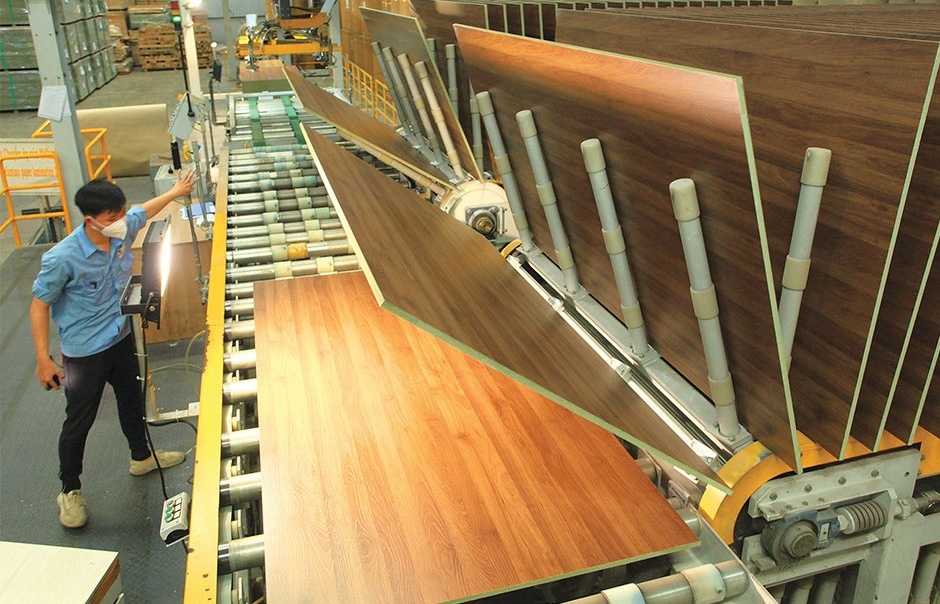Wood sector to carve out growth
 |
| illustration photo |
The plan, the first of its kind in the South East Asian country, is now under the Ministry of Agriculture and Rural Development’s (MARD) consideration.
Le Xuan, head of the MARD’s department of processing and trade for agro-forestry-fisheries products and salt production, said that if the plan was successfully implemented, it would make the industry less dependent on foreign material imports.
Under the plan, some 8.4 million hectares of production forests nationwide will be developed to meet 50 and 80 per cent of local demand for wood materials by 2015 and after 2020, respectively.
At present, the industry has to import over 80 per cent of its needed wood materials, whose prices annually augment by 10-20 per cent, from around the world for its production. For example, the industry had to import $667 million worth of wood materials in 2005, $760 million in 2006, over $1 billion in 2007, $1.13 billion in 2009 and $1.14 billion in 2010. These figures equate with 45-50 per cent of Vietnam’s total wood product export turnover in these years.
According to the Asian Development Bank, Vietnam’s current average economic growth of 6-8 per cent per year would result in a 6-11 per cent augmentation in local demand for wood products.
Under the plan, Vietnam’s northern region will see a wood processing development triangle including Hanoi, Haiphong and Quang Ninh province, which are home to convenient sea ports and roads and near northern provinces boasting big forests.
In the country’s southern region, the industry’s development will continue to be concentrated in Ho Chi Minh City, Dong Nai and Binh Duong provinces, while many industrial parks exclusively engaged in producing and processing wood will be developed in the Central Highlands region.
Heiko Woerner, technical advisor at the Germany-based GFA Consulting Group, said Vietnam’s high dependence on foreign wood sources brought big risks as the country’s wood product markets overseas were applying more technical barriers, while it was difficult to prove imported wood materials were legal.
For example, under the US’ Lacey Act, which took effect in April last year, all wood products exported to the US must have certification showing they were legal. Therefore, exporters had to clearly discern their sourcing and could not simply rely on documents provided by sellers.
Violations of this federal act could result in civil penalties of up to $10,000, criminal sanctions of up to $500,000 in fines for corporations and $250,000 for individuals. Up to five years’ imprisonment was also possible, and the products could be seized or destroyed, Woerner said.
In another case, the EU’s Forest Law Enforcement, Governance and Trade (FLEGT) will take effect this year to encourage members to implement policies using timber from sustainably managed forests and legal sources and to make voluntary partnership agreements with producing countries.
What the stars mean:
★ Poor ★ ★ Promising ★★★ Good ★★★★ Very good ★★★★★ Exceptional
 Tag:
Tag:
Related Contents
Latest News
More News
- Industrial parks within Vietnam keen on Taiwanese investment (April 17, 2024 | 23:00)
- Vietnam can emulate Taiwanese high-tech success (April 17, 2024 | 21:00)
- Capital influx from Taiwan builds up steam in Vietnam (April 17, 2024 | 19:00)
- Chip industry taking on new players (April 17, 2024 | 16:38)
- Support rises in semiconductor chip development in Vietnam (April 17, 2024 | 16:00)
- Beacon Investment Fund to expand Lotus Group's F&B operations (April 17, 2024 | 11:09)
- Public investment progress requires a stronger thrust (April 17, 2024 | 09:21)
- Disbursement delay deemed unacceptable (April 17, 2024 | 09:13)
- Lack of sand prompts alternatives for traffic projects (April 17, 2024 | 08:00)
- Vietnam asks Apple to make it global production base (April 16, 2024 | 16:11)





















 Mobile Version
Mobile Version